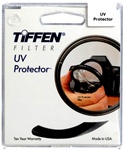
|

|

|

|
 |
|
Tiffen 37mm UV Protection Glass Filter
|
|
|

Ultraviolet filters come in a variety of absorption levels, usually measured by their percent transmission at 400 nanometers (nm), the visible-UV wavelength boundary. Use a filter that transmits zero percent at 400 nm, such as the Tiffen Haze 2, for aerial and far-distant scenes; the Tiffen Haze 1

|

|
 |
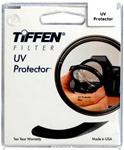
|

|

|

|
 |
|
Tiffen 43mm UV Protection Glass Filter
|
|
|

Ultraviolet filters come in a variety of absorption levels, usually measured by their percent transmission at 400 nanometers (nm), the visible-UV wavelength boundary. Use a filter that transmits zero percent at 400 nm, such as the Tiffen Haze 2, for aerial and far-distant scenes; the Tiffen Haze 1

|

|
 |
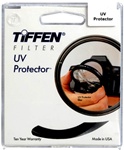
|

|

|

|
 |
|
Tiffen 46mm UV Protection Glass Filter
|
|
|

Ultraviolet filters come in a variety of absorption levels, usually measured by their percent transmission at 400 nanometers (nm), the visible-UV wavelength boundary. Use a filter that transmits zero percent at 400 nm, such as the Tiffen Haze 2, for aerial and far-distant scenes; the Tiffen Haze 1

|

|
 |
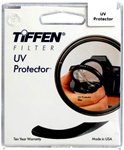
|

|

|

|
 |
|
Tiffen 49mm UV Protection Glass Filter
|
|
|

Ultraviolet filters come in a variety of absorption levels, usually measured by their percent transmission at 400 nanometers (nm), the visible-UV wavelength boundary. Use a filter that transmits zero percent at 400 nm, such as the Tiffen Haze 2, for aerial and far-distant scenes; the Tiffen Haze 1

|

|
 |
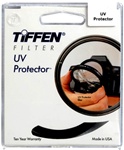
|

|

|

|
 |
|
Tiffen 52mm UV Protection Glass Filter
|
|
|

Ultraviolet filters come in a variety of absorption levels, usually measured by their percent transmission at 400 nanometers (nm), the visible-UV wavelength boundary. Use a filter that transmits zero percent at 400 nm, such as the Tiffen Haze 2, for aerial and far-distant scenes; the Tiffen Haze 1

|

|
 |
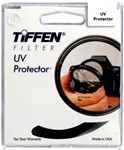
|

|

|

|
 |
|
Tiffen 55mm UV Protection Glass Filter
|
|
|

Ultraviolet filters come in a variety of absorption levels, usually measured by their percent transmission at 400 nanometers (nm), the visible-UV wavelength boundary. Use a filter that transmits zero percent at 400 nm, such as the Tiffen Haze 2, for aerial and far-distant scenes; the Tiffen Haze 1

|

|
 |
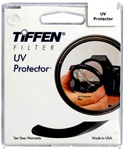
|

|

|

|
 |
|
Tiffen 40.5mm UV Protection Glass Filter
|
|
|

Ultraviolet filters come in a variety of absorption levels, usually measured by their percent transmission at 400 nanometers (nm), the visible-UV wavelength boundary. Use a filter that transmits zero percent at 400 nm, such as the Tiffen Haze 2, for aerial and far-distant scenes; the Tiffen Haze 1

|

|
 |
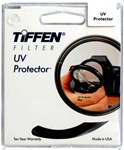
|

|

|

|
 |
|
Tiffen 58mm UV Protection Glass Filter
|
|
|

Ultraviolet filters come in a variety of absorption levels, usually measured by their percent transmission at 400 nanometers (nm), the visible-UV wavelength boundary. Use a filter that transmits zero percent at 400 nm, such as the Tiffen Haze 2, for aerial and far-distant scenes; the Tiffen Haze 1

|

|
 |
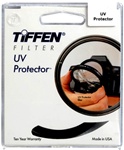
|

|

|

|
 |
|
Tiffen 62mm UV ProtectionGlass Filter
|
|
|

Ultraviolet filters come in a variety of absorption levels, usually measured by their percent transmission at 400 nanometers (nm), the visible-UV wavelength boundary. Use a filter that transmits zero percent at 400 nm, such as the Tiffen Haze 2, for aerial and far-distant scenes; the Tiffen Haze 1

|

|
 |
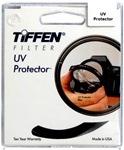
|

|

|

|
 |
|
Tiffen 67mm UV Protection Glass Filter
|
|
|

Ultraviolet filters come in a variety of absorption levels, usually measured by their percent transmission at 400 nanometers (nm), the visible-UV wavelength boundary. Use a filter that transmits zero percent at 400 nm, such as the Tiffen Haze 2, for aerial and far-distant scenes; the Tiffen Haze 1

|

|
 |
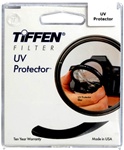
|

|

|

|
 |
|
Tiffen 72mm UV Protection Glass Filter
|
|
|

Ultraviolet filters come in a variety of absorption levels, usually measured by their percent transmission at 400 nanometers (nm), the visible-UV wavelength boundary. Use a filter that transmits zero percent at 400 nm, such as the Tiffen Haze 2, for aerial and far-distant scenes; the Tiffen Haze 1

|

|
 |
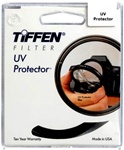
|

|

|

|
 |
|
Tiffen 77mm UV Protection Glass Filter
|
|
|

Ultraviolet filters come in a variety of absorption levels, usually measured by their percent transmission at 400 nanometers (nm), the visible-UV wavelength boundary. Use a filter that transmits zero percent at 400 nm, such as the Tiffen Haze 2, for aerial and far-distant scenes; the Tiffen Haze 1

|

|
 |
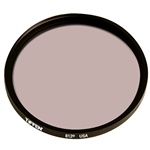
|

|

|

|
 |
|
Tiffen 58mm 812 Warming Glass Filter
|
|
|

This exclusive Tiffen warming filter improves skin tones and is ideal for portraits taken on a cloudy day or outdoors, in shade on a sunny day.

|

|
 |
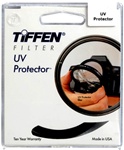
|

|

|

|
 |
|
Tiffen 82mm UV Protection Glass Filter
|
|
|

Ultraviolet filters come in a variety of absorption levels, usually measured by their percent transmission at 400 nanometers (nm), the visible-UV wavelength boundary. Use a filter that transmits zero percent at 400 nm, such as the Tiffen Haze 2, for aerial and far-distant scenes; the Tiffen Haze 1

|

|
 |
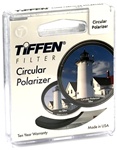
|

|

|

|
 |
|
Tiffen 52mm Circular Polarizer Glass Filter
|
|
|

Polarizer & Circular Polarizer - Essential for outdoor photography; deepens intensity of blue skies; reduces or eliminates glare. Use circular polarizers for auto-focus cameras, as recommended by the camera manufacturer.

|

|
 |
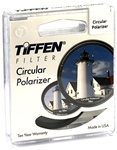
|

|

|

|
 |
|
Tiffen 58mm Circular Polarizer Glass Filter
|
|
|

Polarizer & Circular Polarizer - Essential for outdoor photography; deepens intensity of blue skies; reduces or eliminates glare. Use circular polarizers for auto-focus cameras, as recommended by the camera manufacturer.

|

|
 |
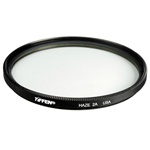
|

|

|

|
 |
|
Tiffen 67mm Haze 2A Glass Filter
|
|
|

Safeguard your lens and absorb UV light. Film and video are more sensitive to UV light than our eyes are. This often shows up as a bluish cast in images, especially shots from high altitudes and long distances, particularly over water. Ultra Violet filters are available in a variety of UV absorption levels.

|

|
 |
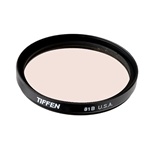
|

|

|

|
 |
|
Tiffen 77mm 81B Light Balancing / Warm Filter
|
|
|

The 81 series filters are useful with daylight corrected film in cool light conditions. As letters advance, density and warmth increases.

|

|
 |
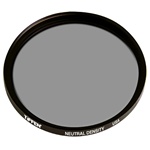
|

|

|

|
 |
|
Tiffen 77mm Neutral Density 0.9 Filter
|
|
|

These filters reduce the amount of light passing through the camera lens without changing the color of the scene. They are especially useful in bright light conditions to help prevent overexposure. Neutral Density filters also allow proper exposure at a wider lens opening for reduced depth-of-field to highlight a key subject by making the foreground and/or background out of focus.

|

|
 |

|

|

|

|
 |
|
Tiffen 67mm Circular Polarizer Glass Filter
|
|
|

Polarizer & Circular Polarizer - Essential for outdoor photography; deepens intensity of blue skies; reduces or eliminates glare. Use circular polarizers for auto-focus cameras, as recommended by the camera manufacturer.

|

|
 |

|

|

|

|
 |
|
Tiffen 77mm Circular Polarizer Glass Filter
|
|
|

Polarizer & Circular Polarizer - Essential for outdoor photography; deepens intensity of blue skies; reduces or eliminates glare. Use circular polarizers for auto-focus cameras, as recommended by the camera manufacturer.

|

|
 |
